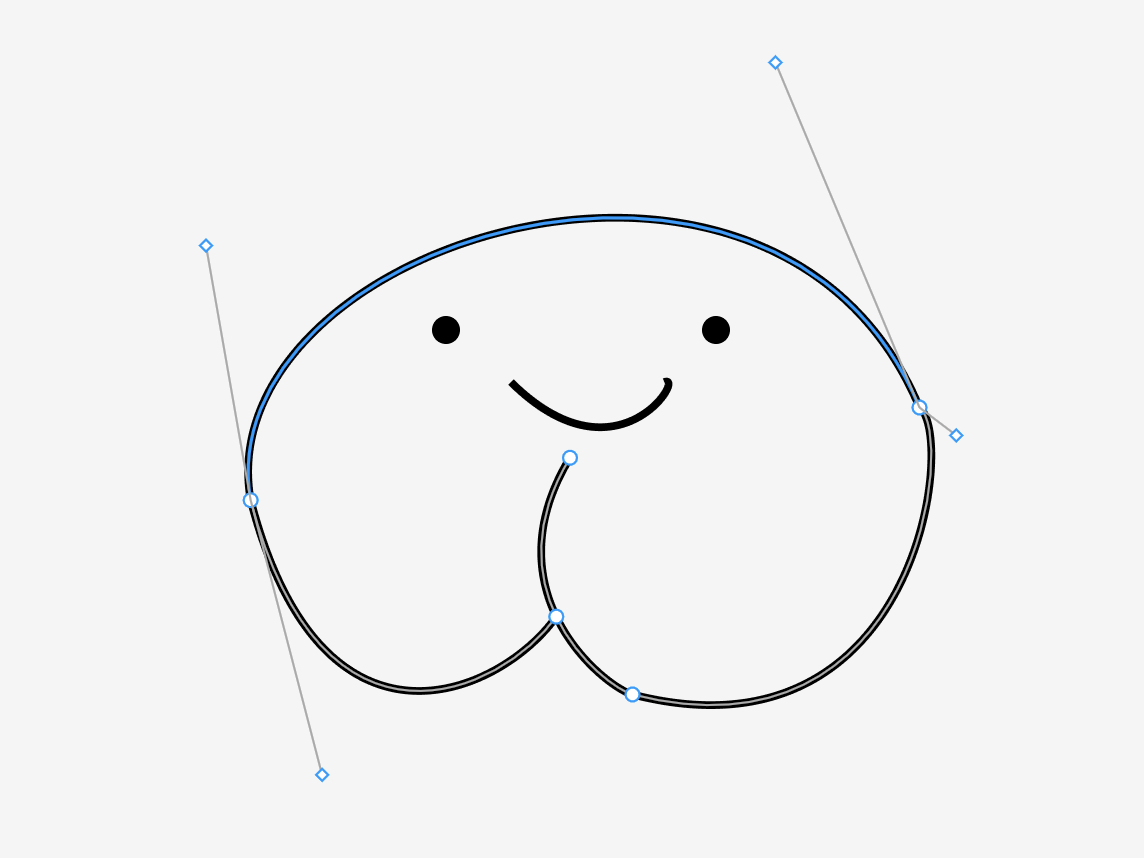Bezier Butts
Designing learning experiences to be relatable and engaging
This is a blog post about butts.
Working on day 15 of the 80/20 design challenge. It's all about using the pen tool to draw bezier butts.
— Nate Kadlac 🎨 (@kadlac) July 14, 2022
This is not your everyday design course.
There’s something interesting here - Nate’s managed to create this lovely compression.
I’ve been thinking a lot about designing learning experiences recently. In my last post notes on teaching & chairs I wrote:
I’m still learning how to teach (ha!). But I’ve found that when constructing a syllabus or a lesson there’s a kind of framework I follow. Maybe this is old news for teachers. It goes something like this:
- First figure out what the goal is for your students. Ideally you try and write this as a statement: after completing this course they will be able to…
- Understand what the current level of understanding is. What are the pre-existing approaches, mental models and experience of your students? For the courses I’ve been teaching I run a survey before I start to try and tease out these things.
- Decide on the content of the teaching. What are the topics you want to teach (that meet your students where they are and teach them the skills to meet their goals)?
Find ways to communicate each concept clearly so that it’s easy to grasp and hard to confuse, even for people from a wide range of backgrounds and experiences.
Points 1-3 are relatively straightforward. 4 is harder. I’ve found that there’s a huge gap between knowing a concept and being able to explain it clearly. If you get through 1-4 you’re doing pretty well as a teacher. But you’re still just telling them what you want them to know.
There’s more you can do:
- Find examples, data points and evidence that what you’re teaching is true. It’s one thing to make an assertion like “Your presentation should have an executive summary” and quite another thing to find evidence for your claim. Can you convince your students to both care about what you’re saying AND believe you?
- Find some stories that deepen the emotional connection to the subject. Why is this stuff important? Why do you care? What are real examples from the world that show this learning in action?
- Shift the teaching from telling to showing - find ways for students to come to their own insights. The highest artform of this is to never once tell the student what you want them to know, but to allow them to arrive there themselves.
- Once you’ve done all of these things, finally, you need to make it entertaining. You need to make the teaching experience capture their attention for extended periods of time.
Designing Bezier Butts is firmly level 8 kind of stuff. Beyond thinking about what you want to teach, and simply telling people what you know, Nate’s thinking about designing a learning experience that is relatable (everyone has a butt!) and engaging (who doesn’t want to have fun drawing bezier butts!)
What’s nice when someone coins a phrase like this is that it’s sticky. Forever now, when I’m thinking about designing a learning experience I can just remember the phrase bezier butts and instantly think about how to make the learning more relatable and entertaining.
Thanks Nate. (Also be sure to sign up for Nate’s great 80/20 design course - sounds like fun!)
Inspired, I took a few minutes to figure out how to use the bezier tool and drew a butt:

August 22, 2025
June 27, 2025
Google is Grounded and Needs to Learn How to Soar
March 21, 2025
This post was written by Tom Critchlow - blogger and independent consultant. Subscribe to join my occassional newsletter: